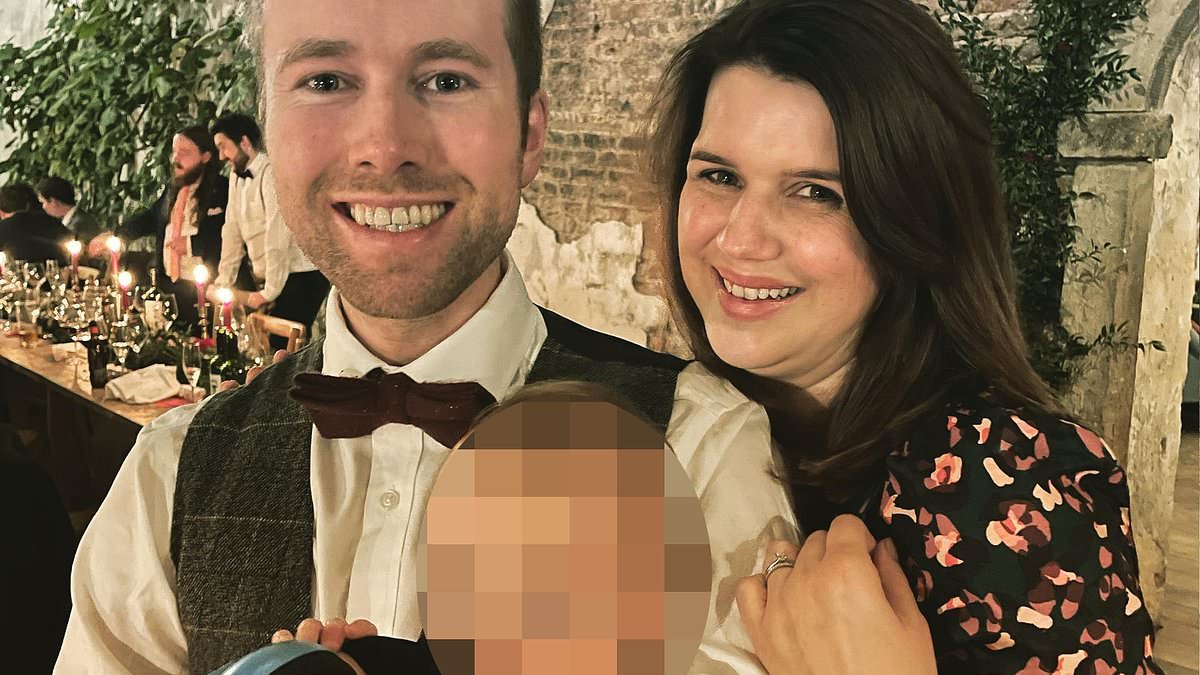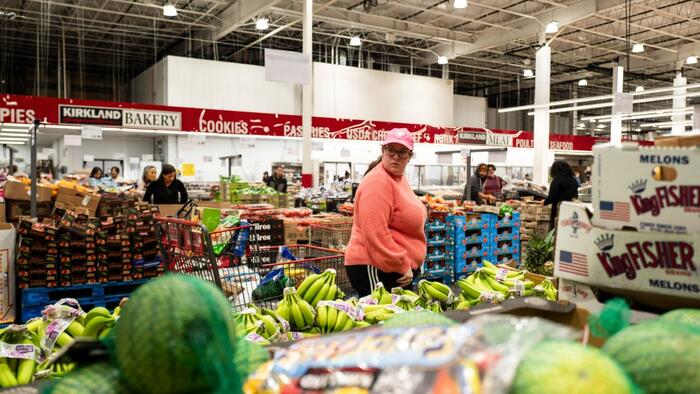Copyright dailymail

A mother who tragically died along with her newborn baby after she opted for a home birth were both victims of neglect by maternity services, a coroner ruled today. Jennifer Cahill - described by her family as an 'amazing, attentive' mother - chose to deliver Agnes Lily at home after feeling 'unsupported' in hospital when she had her son three years earlier. She had suffered a postpartum haemorrhage after the first birth - a potentially fatal condition involving heavy bleeding. However her husband Rob told the hearing that no-one had fully explained the risks to them. The mother-of-one, described as an 'educated lady and highly literate', had carried out extensive research and believed the risk of bleeding was lower in a home birth. But tragically the delivery descended into 'chaos' as the 34-year-old struggled to deliver her daughter in June last year, a two-week inquest heard. Today a coroner concluded that Mrs Cahill's birth plan - in which she specified receiving no drugs and minimal outside interference - had been 'entirely reasonable'. Instead Joanne Kearsley said the failure to give Mrs Cahill an appointment with a senior midwife to discuss the risks of a home birth meant she was robbed of the opportunity to make an 'informed decision' on whether to go ahead. The coroner said: 'In my view this was a catastrophic error and a gross failure to provide basic medical care.' She concluded there had then been 'gross failures' in the care of Mrs Cahill and Agnes once she went into labour, saying it was likely that both would have survived had they been transferred to hospital sooner. In deeply moving scenes, relatives wept as her widower Rob bravely read a statement saying the family had been 'devastated' to learn the many ways they had been let down. 'Ultimately, the Manchester Foundation Trust's neglectful care contributed to both Jen and Agnes’ deaths,' he said. 'Jen was a truly wonderful person and we’re sure that Agnes would have been as exceptional as her mummy. They are dearly loved and deeply missed.' Mrs Cahill, an international export manager, had made it clear she wanted a natural birth for the baby, with no drugs and minimal outside interference. But she became 'fatigued' as her contractions intensified, and amid 'chaotic' scenes, while both she and her newborn daughter were rushed to hospital, neither could be saved. Midwives who attended the couple's home in Prestwich, Greater Manchester described her birth plan as 'intense'. As well as having specified that she did not want drugs to help her through labour, she wanted physical examinations kept to a minimum, labour to take place in a room illuminated only by tea lights and for the midwives to keep their voices down. In harrowing evidence they told the hearing of the 'chaotic' scene as they realised mother and baby were in trouble as she entered the final stages of labour. 'She was beating herself up because it was not happening,' one of them, Julie Turner - who has not been able to work since the double tragedy - told the inquest in Rochdale. 'She was struggling and shouted: "I really want to do this. I am a warrior! Why will my body not let me?"' The inquest was told that police investigated an online group supporting home births after it emerged that Mrs Cahill had been a member. Home Birth Support Group UK, which was run by 'experienced Doula' Samantha Gadsden, closed after being linked to the double tragedy. However no further action was taken against the controversial site after it said it did not offer any medical advice to pregnant mothers. Manchester University NHS Foundation Trust has accepted that Mrs Cahill should have been referred to a senior midwife after deciding on a home birth so the dangers could be discussed. The court heard how 'kinder' or 'more positive' language which medical staff are encouraged to use in maternity settings - for example avoiding explicit reference to a risk of death - may actually prevent women from fully understanding the possible risks of opting for a home birth. It was told that Mrs Cahill eventually opted for a home birth because she was reassured by the prospect of having two midwives dedicated to her care plus the fact it would take place 'in the comfort of her own home'. Instead the early hours of June 3 last year became a scene of chaos as Agnes Lily was born with the cord wrapped around her neck and covered in meconium. She was rushed to North Manchester General Hospital but died three days later of hypoxia. Mrs Cahill suffered a postpartum haemorrhage again, twice losing significant amounts of blood estimated at around two litres in total. She was taken to the same hospital with haemorrhagic shock but went into cardiac arrest and was declared dead shortly after admission from multi-organ failure. The inquest was told that an increasing number of requests by mothers to have out-of-hospital births had made midwives worried about being called out. Midwife Ms Turner told the hearing: 'There was unease in the office about high-risk births. Midwives were getting nervous about being on-call. 'We seemed to to be getting more women with complex plans. 'It used to be unusual for high-risk women to have a home birth, but in the last couple of years there has been a significant increase. 'Staff were fearful. It is one of the reasons we now go out in twos so that we can support each other.' The midwife told how Mrs Cahill had declined a Strep B test and initially refused to have any vaginal examinations. She said that at 4am Mrs Cahill seemed to be having a normal labour, although it was discovered the bottle and tube delivering gas and air was not working and they had to get new bottles. Ms Turner said it was difficult to test the equipment in advance because it was in a sterile bag. But she did accept that record-keeping was flawed, with most of the data missing in the final stages of labour and notes scribbled on incontinence pads. Mrs Cahill's blood pressure was high on the last recording, meaning it should have been re-checked within half an hour - possibly giving an indication that mother and baby were in distress. Giving her conclusions today, Ms Kearsley slammed the failure of the trust to work with Ms Cahill to draw up a plan for the home birth in advance. 'In my view this was a catastrophic error and a gross failure to provide basic medical care,' she said. She also highlighted a series of missed opportunities during Mrs Cahill's antenatal care, including a failure to refer her back to an obstetrician when she displayed raised protein levels in her urine a month before Agnes was delivered. This would have been a chance to explain the risks of a home birth and to suggest that she consider having labour induced. Instead, throughout her pregnancy, as the couple weighed up whether to opt for a home birth, the potential risks were 'not fully explored', the coroner said. Crucially the coroner said Mrs Cahill's birth plan - described as 'intense' by the midwives who attended her labour - had been 'entirely reasonable' and did not account for their failures on that tragic morning. Problems including poor monitoring of Mrs Cahill's blood pressure and Agnes' heart rate plus failure to detect signs of foetal distress amounted to 'a gross failure to provide basic medical care', she said. Instead they should have realised mother and baby were at risk once Agnes' head became visible and discussed with the couple whether Mrs Cahill should be transferred to hospital. She described Mrs Cahill as an 'educated' woman who was 'more than capable of informing herself and undertaking her own research'. Relatives sobbed and hugged one another in the packed courtroom as the coroner spent more than two hours giving her findings. Outlining her medical consultations over the course of her pregnancy, Ms Kearsley said she was 'satisfied' that Mrs Cahill was under the impression she was at low risk. The coroner said mothers-to-be would be 'surprised' to learn that community midwives attended on average just two home births a year. This made it harder for them to maintain skills such as inserting cannulas, administering stitches and resuscitating newborns. At the same time, midwives had 'very real concerns' about the rising number of home births they were being asked to attend involving pregnancies with a potential for complications. Afterwards Claire Horton, medical negligence lawyer at Fieldfisher Manchester, who represented the family, said: 'National guidelines highlight the importance of allowing women to choose how they want to give birth, but it is the fundamental responsibility of every hospital to give those women all the information relevant to their own health and the services available so that they make the right and safe choice. 'The inquest heard that Jen was not given the information she needed to enable her to make the safest choice. 'It has been devastating for the family to hear evidence that had Jen been transferred to hospital earlier in her labour and given birth in hospital, both she and Agnes would likely have survived. 'The hospital Trust has said that as a result of this tragedy, it has overhauled its home birth service. But the overriding need is to deliver essential training to medical staff and ensure it is effective.' Manchester NHS Foundation Trust was approached for comment. The inquest at Rochdale Coroner's Court heard criticisms of Mrs Cahill's ante-natal care, including a failure to impress fully upon her the risks of a home birth. There has also been criticism of community midwives, with many feeling under-trained to deal with 'out of guidance' births - as the NHS refers to cases where doctors had advised a hospital birth instead. They are often called out to home birth emergencies when they have already worked a full shift. The inquest has already heard that women are being put off by hospital births by what they read on the internet and what they heard from other mothers. But it was told that women with high-risk pregnancies still do not have enough information to decide if they can have a home birth safely. Esme Polshaw, head of midwifery at Manchester University NHS Foundation Trust, said its hospitals alone had dealt with 74 home births since April this year of which 34 were termed 'out of guidance'. Twenty-nine of the mothers went ahead with a home birth anyway yet more than half - 15 - had to be taken to hospital as obstetric emergencies. She agreed with coroner Joanne Kearsley that mothers still have no way of properly assessing the risks of home births and are not even able to know how experienced their midwives are.



